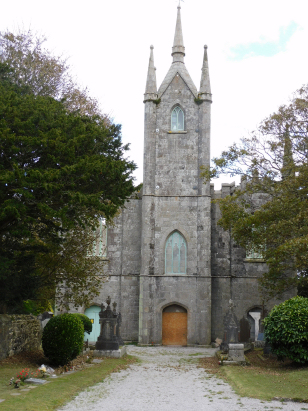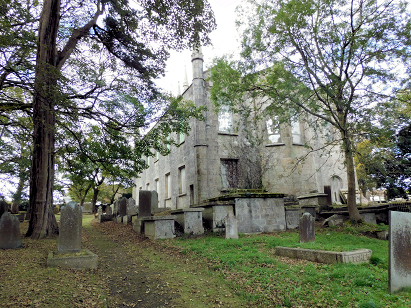
England
& Wales Hardwicke Marriage Index
Marriages
1754 - 1837
St Day Holy Trinity
 |
England
& Wales Hardwicke Marriage Index |
The ParishSt Day was created as a full parish in 1835 from its mother parish of Gwennap, it lies in western Cornwall roughly 4 miles east of the industrial town of Redruth. St Day sits on the B3298 road which links through from the A30 to the northeast of Redruth to the A393 to its southeast. Much of St Day sits immediately west of the B3298 centred around a triangle of lanes that meet to form its notional heart. St Day is at the heart of Cornwall's mining industry, a place of its time when the area was the "Copper Kingdom" of the county. The intrusion of mines and engine houses even within the built environment a tribute to the intense activity that once reigned here. Today St Dat has lost its industry and some of its vibrancy as a result, as Pevsner puts it "has the faded dignity of a place that went quietly to sleep after its boom years". Industrial paraphernalia including former railway lines litter the landscape. St Day is drained eastwards by the Carnon River's headwaters, the river heading to the nearby ria of Carrick Roads before entering the English Channel. St Day is sited, on a low hill, at around 120 metres above the sea land continues rising westwards to 178 on nearby Mount Ambrose, just outside Redruth. In creating St Day as a full parish just over 1,000 acres were removed from that of Gwennap parish, within that acreage a population of almost 4,000 parishioners would have resided, it is clear from this short transcript that most marriages were still solemnized at the mother parish. Whilst St Day is not mentioned in Domesday Book the manor of Tolgullow within its area was so mentioned, a holding of Count Robert of Mortain offering a pair of ploughs plus the usual meadows & woodland, a remote country holding at that time, |
 |
|
|

|
| Register No | Covering Dates | Deposited With | Register Style | Quality Standard | Comments |
| 1 |
14th September 1835 - 304th April 1837 |
Cornwall Record Office - Reference - P47/1/4 |
Standard Rose style preprinted and prenumbered Marriage
register |
Grade 2 Register - not a perfect read but with a low
likelihood of misreads |
None |
|
Redruth
St Uny
|
Kenwyn
St Cuby (detached)
|
Kenwyn
St Cuby (detached)
|
|
Redruth
St Uny
|
 |
Kenwyn
St Cuby (detached)
Gwennap St Wenappa |
|
Redruth
St Uny
|
Gwennap
St Wenappa
|
Gwennap
St Wenappa
|
Corrections to Tinstaafl Transcripts